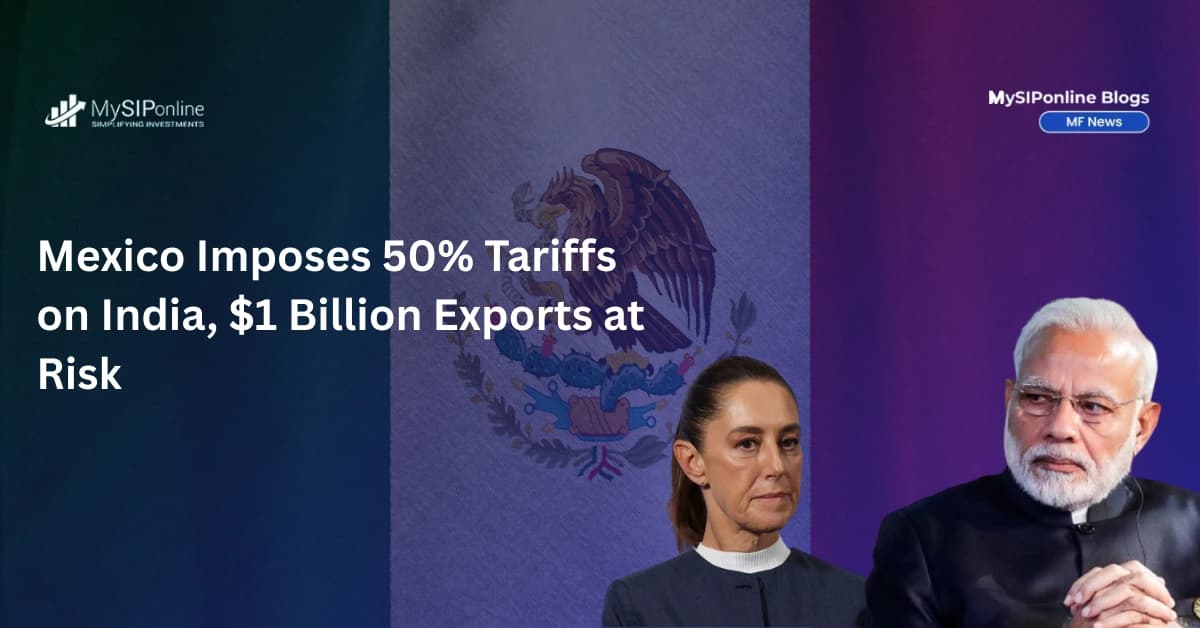One of the important parameters that investors look for while investing in a mutual fund scheme is its expense ratio. They often take it as a vital aspect to compare two or more schemes of a similar category. Let’s learn about it in detail and also check how it can affect the returns of a mutual fund scheme.
Table of Content
What Is an Expense Ratio?
A ratio that measures the per unit management cost of a fund is referred to as an Expense Ratio. This number is derived by dividing the fund’s total expenses by its assets under management. The AMC incurs several expenses which all become the part of this ratio. These include the part of the fee paid to the fund management team where the qualified professionals track the markets and make the right selling and buying decisions for the scheme. Besides, there are separate costs for transfer and registrar, auditing, legal work, custodian, marketing, as well as distribution. They are recovered from the unitholders on a regular basis.
Major Components of Expense Ratio
There are numerous charges that make up the expense ratio of the scheme and these are required to run the administration of the mutual fund in a smooth manner. The cost is recovered from the investor itself on a day-to-day basis.
The three types of expenses that are a part of the Expense Ratio are Management Fee, Administrative Costs, and Distribution fee (12-1b). Let’s know about each one of them in detail!
- Management Fee
Mutual funds, being a sophisticated investment product, require formulation of several investment methodologies and strategies before actually investing money in some underlying assets. For this task, Asset Management Companies (AMC) appoint fund managers who manage the schemes’ assets. These managers need to be highly qualified and must hold relevant experience in the field of fund management. The professional credentials are the key here. The management cost, thus applied to any mutual fund scheme is the part of fund managers’ salary or simply put an advisory fee. The number ranges between 0.50% – 1.0% of the funds’ assets on an average. - Administrative Costs
The expenses which are used in running the fund fall under this segment. More precisely, administrative cost would include record keeping, customer support, and service, information emails, communications. They might vary from one scheme to another and are expressed as a percentage of the fund assets. - 12-1b Distribution Fee
Most of the mutual fund schemes collect the 12-1b Distribution Fee to fulfill the purpose of advertising and promoting the fund. The AMCs charge their shareholders to market and promote the fund to the investors.
The combination of these three equals the percentage of assets deducted from any scheme, which is also known as the expense ratio of the mutual fund.
How Is the Expense Ratio Calculated?
The expenses incurred by any asset management company will have to be managed with some certain limits which are specified under the Regulation 52 of SEBI Mutual Fund Regulations. The capital market regulator has allowed equity schemes to charge a maximum of 2.5% expenses.
On the top of this, it also allows 5 basis points as exit load charges (which was 20 points earlier), and 30 basis points more to incentivise penetration beyond the top 30 towns. The basic rule states that as the corpus goes up, the expense ratio must go down.
For instance, on investing Rs 1,00,000 in a mutual fund scheme which has an expense ratio of 2 percent, you’re paying Rs 2,000 as management fees. Now, if the fund makes a profit of 10%, then deducting the expense ratio of 2 %, the profit earned by you will be 8%. The NAV of any mutual fund scheme is reported after netting off the fees and other expenses, thus it is important to know how much the scheme is deducting in the name of expenses.

Consider a mutual fund ‘X’, whose
Total AUM: Rs 1 crore
Management Fee: Rs 10,0000
Other Expenses: Rs 50,000
Total Expenses: Rs 1,50,000
Thus, Expense Ratio: 1,50,000/1,0000000=0.015 or 1.5% of your investment value.
Does Expense Ratio Impact the Returns of a Scheme?
As stated earlier, the expense ratio is an indicator of the charges that the fund imposes in percentage for conducting the management services of your investment portfolio. Therefore, if a fund charges a lower expense ratio, then more profits will be provided to the customer, and if there is a higher expense ratio, then this states less profitability.
But one important thing to note here is, though high expense ratio impacts the fund’s returns, it is not necessary that the fund with high expense ratio will always give low returns.
In other words, it can be said that the expense ratio does not directly impact the returns of the scheme. However, it is something that is deducted from the overall returns, and this way it reduces the profits of an investor.
To explain this more clearly, let’s take a few examples!
| Small Cap Funds- Peer Comparison | ||||||
|---|---|---|---|---|---|---|
| Fund | Launch | Returns | Expense Ratio (%) | Assets(Cr) | ||
| 1-Year | 3-Years | 5-Years | ||||
| Reliance Small Cap Fund | Sep-10 | 5.84 | 17.86 | 34.89 | 2.31 | 7,618 |
| Franklin India Smaller Companies Fund | Jan-06 | -3.63 | 11.59 | 27.02 | 2.06 | 7,430 |
| HDFC Small Cap Fund - Regular Plan | Apr-08 | 12.94 | 18.38 | 22.84 | 2.14 | 5,111 |
| L&T Emerging Businesses Fund | May-14 | 1.66 | 19.09 | - | 2.4 | 5,539 |
| SBI Small Cap Fund | Sep-09 | 5.86 | 18.36 | 33.08 | 2.8 | 1,067 |
| Returns as on Sep 27, 2018 | ||||||
The table above shows the comparison of top small cap funds on the basis of their AUM, returns, and expense ratio. One must note here that the long-term, i.e., the 5-years return of Franklin India Smaller Companies Fund is higher with 27.02% than the 5-years return of HDFC Small Cap Fund, which is 22.84% as on Sep 27, 2018, and the expense ratio of the former is less than that of latter. But, in the short-term, 1-year return, where Franklin India Smaller Companies Fund is in negative, HDFC Small Cap Fund is offering the best returns among its peers with 12.94%. Besides, the assets under management of both the schemes fall under the same slab. This denotes that the returns are a result of the fund management and the market movement, and not of the expense ratio.
Invest in the Best Mutual Funds
- 100% Paperless
- No Transaction Charges
- Easy to Invest
- Safe & Secure
What Are Rules Set By SEBI on Expense Ratio of a Mutual Fund?
As per the recent meeting, a ceiling has been set on the expense ratio, and AMCs have been asked to revise the same by SEBI. Various slabs have been formed on the basis of the assets under management for all open-ended schemes.
| AUM Slabs | Expense Ratio % |
|---|---|
| For the first Rs 500 crore | 2.25% |
| For Rs 500-750 crore | 2% |
| For Rs 750-2,000 crore | 1.75% |
| For Rs 2,000 to Rs 5,000 crore | 1.60% |
| For Rs 5,000 to Rs 10,000 crore | 1.50% |
| For Rs 10,000 to Rs 50,000 crore | Reduction of 0.05% for every increase of Rs 5,000 crore |
| For AUM greater than Rs 50,000 crore | 1.05% |
| AUM Slabs | Expense Ratio % |
|---|---|
| Debt Funds | |
| For the first Rs 100 crore of the daily net assets | 2.25% |
| On the Next 300 crore | 2.00% |
| On the Next 300 crore | 1.75% |
| On the balance of the assets | 1.50% |
| For Rs 5,000 to Rs 10,000 crore | 1.50% |
| Exchange Traded Funds and Index Funds | |
| Daily net assets | Maximum 1.50% |
Do All the Mutual Funds Have the Same Structure for Expense Ratio?
Well, you must note that different funds follow a different structure of expense ratio. Passively managed funds like index funds or ETFs have lower expense ratio as compared to that of the actively managed funds. Reason being that passively managed funds track the underlying index and they do not require the fund manager to take active investment calls.
As of now, SEBI has asked AMCs to launch schemes under a single plan and ensure that all new investors are subject to a single expense structure. Thus, now the TER varies according to the investment amount (*which is already discussed above). A separate plan is introduced for direct investments (investments not routed through a distributor) in existing as well as new schemes. These plans have a lower expense ratio excluding distribution expenses and commission.
A Final Note
Many a time investing in a mutual fund can be a hectic task, and this is more prominent in the case of new investors. We keep telling our investors that they must keep their investment objective, risk appetite, and horizon in mind. Along with these, expense ratio and several similar factors too become a reason for their worries, and they feel confused about picking a scheme. If you find yourself stuck in any such situation, simply connect with the experts available at MySIPonline.
Well, here’s a shortcut too!
You just need to place your query here in the form given below, and we will provide you with the solution in no time.
Must Read













